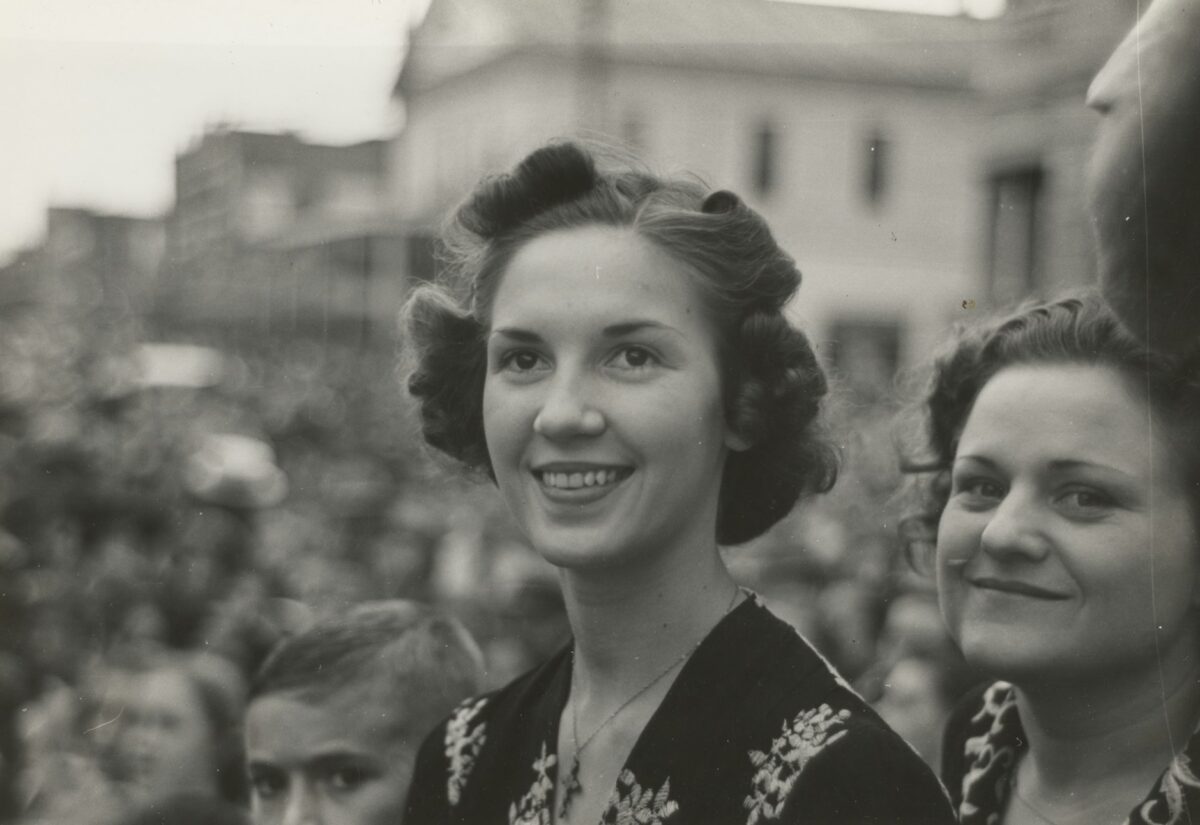 Unsplash/New York Public Library
Unsplash/New York Public LibraryDuring wartime Britain, cosmetics quickly became a rarity. With factories prioritising production for military essentials and imports severely restricted, women across the country adapted with impressive creativity. Rather than give up their beauty routines entirely, British women found resourceful ways to look their best even in challenging times. Here are some intriguing wartime beauty hacks from when cosmetics were scarce, showcasing incredible resourcefulness during Britain’s darkest days.
Homemade beetroot lip stain
Lipstick was among the first luxuries to vanish during wartime rationing, but resourceful British women didn’t let that stop them from having vibrant lips. Beetroot was widely available, and with a straightforward method—boiling beetroot slices and reducing the liquid—they created a lasting, natural lip stain. The beetroot liquid was then carefully applied with fingertips or a small brush, leaving lips vividly coloured and naturally moisturised. This hack became a staple for maintaining a polished appearance without relying on store-bought products. Beetroot not only provided vivid colour but also nourished lips, offering vitamins and moisture, a win-win during difficult times.
Vaseline as mascara substitute
Mascara became another casualty of wartime shortages, but many women turned to a simple yet effective solution: Vaseline. By carefully applying a tiny amount of Vaseline to their eyelashes using a toothbrush or a cleaned mascara wand, women achieved a subtle enhancement that kept their eyes defined and attractive. Though it didn’t deliver dramatic volume or length, Vaseline helped eyelashes appear healthier and slightly glossy. Perfect for everyday wear, this hack made eyes appear brighter, more awake, and maintained a modest glamour even during wartime.
Soot as eyeliner
Coal soot provided an effective stand-in for eyeliner. Carefully mixed with a drop of water, glycerine, or petroleum jelly, soot created a smooth paste easily applied with a fine brush or the tip of a matchstick. This allowed women to maintain their beauty standards despite shortages. The smoky, deep black colour mimicked commercial eyeliner impressively well, providing definition to the eyes and boosting morale. Such innovation proved that resourcefulness could overcome even cosmetic scarcity.
Tea-bag tanning solution
With stocking supplies severely limited, bare legs became commonplace—but many women preferred the appearance of stockings, complete with the fashionable tan shade. Soaking used tea bags in warm water and then applying the tea directly to their legs created a natural, subtle tan that mimicked hosiery. To complete the illusion, they drew a seam down the back of each leg using an eyebrow pencil or carefully applied soot, emulating the look of real stockings. This hack became essential for maintaining a sophisticated and put-together appearance, especially for important social gatherings or work environments.
Flour and water face powder
Powdered cosmetics were hard to find, prompting women to craft their own face powders from kitchen staples. A simple mixture of flour, chalk, baking soda, or even finely ground oats mixed with a small amount of water, glycerine, or rosewater created a serviceable powder foundation. Although it didn’t last as long as commercial products, it effectively mattified the skin and provided an even complexion, ensuring a presentable look despite the limitations. Women learned to customise the mix to match their skin tone and texture, demonstrating impressive adaptability.
Rhubarb hair rinse
Commercial shampoos were in short supply, and inventive women turned to their gardens for hair care solutions. Rhubarb leaves boiled in water created a cleansing hair rinse, effective in keeping hair healthy and shiny. Rich in natural cleansing properties, rhubarb provided a gentle yet thorough clean, removing excess oils without harsh chemicals. Not only was rhubarb plentiful in many British gardens, but it also helped maintain hygiene and grooming standards during rationing, keeping hair looking vibrant and healthy.
Egg-white face masks
Eggs became precious during rationing, but occasionally an egg white could be spared for beauty. Whipped egg whites applied as face masks tightened pores and brightened skin, serving as an affordable beauty treatment. Rich in proteins and vitamins, egg-white masks not only provided cosmetic benefits but also improved overall skin health. While indulging in an egg-based beauty treatment was considered a bit of a luxury, it allowed women to feel pampered even when resources were thin.
Oatmeal exfoliant
Store-bought exfoliants disappeared quickly from shelves, but oatmeal offered a perfect homemade alternative. Mixed with warm water, milk, or even honey, oatmeal gently exfoliated skin, removing dead cells and leaving skin smooth, hydrated, and refreshed. Its gentle texture made it suitable for sensitive skin, reducing redness and irritation. This humble pantry staple became essential for maintaining radiant, healthy-looking skin, proving once again that kitchen ingredients often had hidden cosmetic potential.
Bicarbonate of soda toothpaste
Toothpaste was also rationed, so bicarbonate of soda stepped in as a reliable substitute. Mixed into a paste with water, bicarbonate of soda effectively cleaned teeth, removed stains, and freshened breath. Though it wasn’t as minty or foamy as commercial toothpaste, its whitening properties and antibacterial benefits made it a trusted wartime solution. It also doubled as an occasional mouthwash when diluted further, reinforcing its usefulness and versatility.
Petroleum jelly for perfume longevity
Perfume was scarce, leading women to carefully ration every drop. Applying petroleum jelly on pulse points before spraying perfume helped the fragrance last significantly longer by slowing the evaporation rate. This simple trick maximised the limited supplies of perfume, ensuring women remained elegant and well-presented despite stringent restrictions. Such strategies highlighted the ingenuity required to stretch resources further.
Parsnip skin brightener
An unconventional but surprisingly effective beauty hack involved parsnips, often grown in wartime vegetable gardens. Boiled parsnips mashed into a paste and applied to the skin served as a gentle brightening mask, helping to alleviate dullness and maintain a fresh complexion. Rich in vitamins and minerals, parsnips nourished the skin, providing noticeable benefits beyond mere cosmetic enhancement. This unusual use of a common root vegetable highlighted the extraordinary ingenuity born from wartime necessity.
Lip balm from beeswax
Commercial lip balms were scarce, so beeswax became an invaluable resource. Mixed with a little olive oil, lard, or even cocoa butter, beeswax created a nourishing lip balm, protecting lips from harsh weather conditions. This simple recipe provided much-needed protection, hydration, and relief from chapped lips, showcasing another brilliant adaptation from common household items.
Wartime beauty hacks were about far more than vanity—they embodied resilience, ingenuity, and the ability to maintain morale in challenging circumstances. These creative solutions helped women look their best, providing a vital sense of normalcy and self-care during a time when both were desperately needed.



